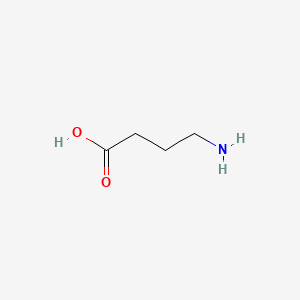| MeSH term | MeSH ID | Detail |
|---|---|---|
| Ventricular Fibrillation | D014693 | 16 associated lipids |
| Fever | D005334 | 35 associated lipids |
| Hamartoma | D006222 | 2 associated lipids |
| Muscular Diseases | D009135 | 7 associated lipids |
| Hyperlipidemias | D006949 | 73 associated lipids |
| Morphine Dependence | D009021 | 9 associated lipids |
| Cough | D003371 | 19 associated lipids |
| Herpes Simplex | D006561 | 3 associated lipids |
| Catalepsy | D002375 | 30 associated lipids |
| Death, Sudden | D003645 | 12 associated lipids |
| Tachycardia | D013610 | 7 associated lipids |
| Meningioma | D008579 | 11 associated lipids |
| Fetal Hypoxia | D005311 | 3 associated lipids |
| Hypoxia, Brain | D002534 | 5 associated lipids |
| Migraine Disorders | D008881 | 11 associated lipids |
| Gastrointestinal Hemorrhage | D006471 | 27 associated lipids |
| Adenoma | D000236 | 40 associated lipids |
| Fetal Alcohol Spectrum Disorders | D063647 | 6 associated lipids |
| Fetal Growth Retardation | D005317 | 9 associated lipids |
| Reye Syndrome | D012202 | 14 associated lipids |
4-aminobutyric acid
4-aminobutyric acid is a lipid of Fatty Acyls (FA) class. 4-aminobutyric acid is associated with abnormalities such as Epilepsy and Premenstrual syndrome. The involved functions are known as Binding (Molecular Function), neuron survival, Process, Uptake and physiological aspects. 4-aminobutyric acid often locates in Microglial, Neurofilament, Neuraxis, Brain region and Neurites. The associated genes with 4-aminobutyric acid are arginine methyl ester, SLC33A1 gene, NKS1 gene, P4HTM gene and ITSN2 gene. The related lipids are pregnenolone sulfate, pregnane-20-one, Pregnanes, Steroids and endogenous steroids.
Cross Reference
Introduction
To understand associated biological information of 4-aminobutyric acid, we collected biological information of abnormalities, associated pathways, cellular/molecular locations, biological functions, related genes/proteins, lipids and common seen animal/experimental models with organized paragraphs from literatures.
What diseases are associated with 4-aminobutyric acid?
4-aminobutyric acid is suspected in Premenstrual syndrome, Epilepsy and other diseases in descending order of the highest number of associated sentences.
Related references are mostly published in these journals:
| Disease | Cross reference | Weighted score | Related literature |
|---|
Possible diseases from mapped MeSH terms on references
We collected disease MeSH terms mapped to the references associated with 4-aminobutyric acid
PubChem Associated disorders and diseases
What pathways are associated with 4-aminobutyric acid
There are no associated biomedical information in the current reference collection.
PubChem Biomolecular Interactions and Pathways
Link to PubChem Biomolecular Interactions and PathwaysWhat cellular locations are associated with 4-aminobutyric acid?
Visualization in cellular structure
Associated locations are in red color. Not associated locations are in black.
Related references are published most in these journals:
| Location | Cross reference | Weighted score | Related literatures |
|---|
What functions are associated with 4-aminobutyric acid?
Related references are published most in these journals:
| Function | Cross reference | Weighted score | Related literatures |
|---|
What lipids are associated with 4-aminobutyric acid?
Related references are published most in these journals:
| Lipid concept | Cross reference | Weighted score | Related literatures |
|---|
What genes are associated with 4-aminobutyric acid?
Related references are published most in these journals:
| Gene | Cross reference | Weighted score | Related literatures |
|---|
What common seen animal models are associated with 4-aminobutyric acid?
There are no associated biomedical information in the current reference collection.
NCBI Entrez Crosslinks
All references with 4-aminobutyric acid
Download all related citations| Authors | Title | Published | Journal | PubMed Link |
|---|---|---|---|---|
| Xu Z et al. | From the Cover: Functional Analysis Reveals Glutamate and Gamma-Aminobutyric Acid-Gated Chloride Channels as Targets of Avermectins in the Carmine Spider Mite. | 2017 | Toxicol. Sci. | pmid:27742867 |
| Turner DP et al. | Using a graphical risk tool to examine willingness to take migraine prophylactic medications. | 2016 | Pain | pmid:27820159 |
| Smetana KS et al. | Antiepileptic dosing for critically ill adult patients receiving renal replacement therapy. | 2016 | J Crit Care | pmid:27546759 |
| Lai EC et al. | Comparative persistence of antiepileptic drugs in patients with epilepsy: A STROBE-compliant retrospective cohort study. | 2016 | Medicine (Baltimore) | pmid:27583857 |
| Motoyama K et al. | Cholesterol-Lowering Effect of Octaarginine-Appended β-Cyclodextrin in Npc1-Trap-CHO Cells. | 2016 | Biol. Pharm. Bull. | pmid:27601082 |
| Setoyama D et al. | Plasma Metabolites Predict Severity of Depression and Suicidal Ideation in Psychiatric Patients-A Multicenter Pilot Analysis. | 2016 | PLoS ONE | pmid:27984586 |
| Donvito G et al. | Palmitoylethanolamide Reverses Paclitaxel-Induced Allodynia in Mice. | 2016 | J. Pharmacol. Exp. Ther. | pmid:27608657 |
| Kantrowitz JT et al. | d-Cycloserine, an NMDA Glutamate Receptor Glycine Site Partial Agonist, Induces Acute Increases in Brain Glutamate Plus Glutamine and GABA Comparable to Ketamine. | 2016 | Am J Psychiatry | pmid:27903101 |
| Mettang T | Uremic Itch Management. | 2016 | Curr. Probl. Dermatol. | pmid:27578082 |
| Dadsetan S et al. | Infliximab reduces peripheral inflammation, neuroinflammation, and extracellular GABA in the cerebellum and improves learning and motor coordination in rats with hepatic encephalopathy. | 2016 | J Neuroinflammation | pmid:27623772 |
